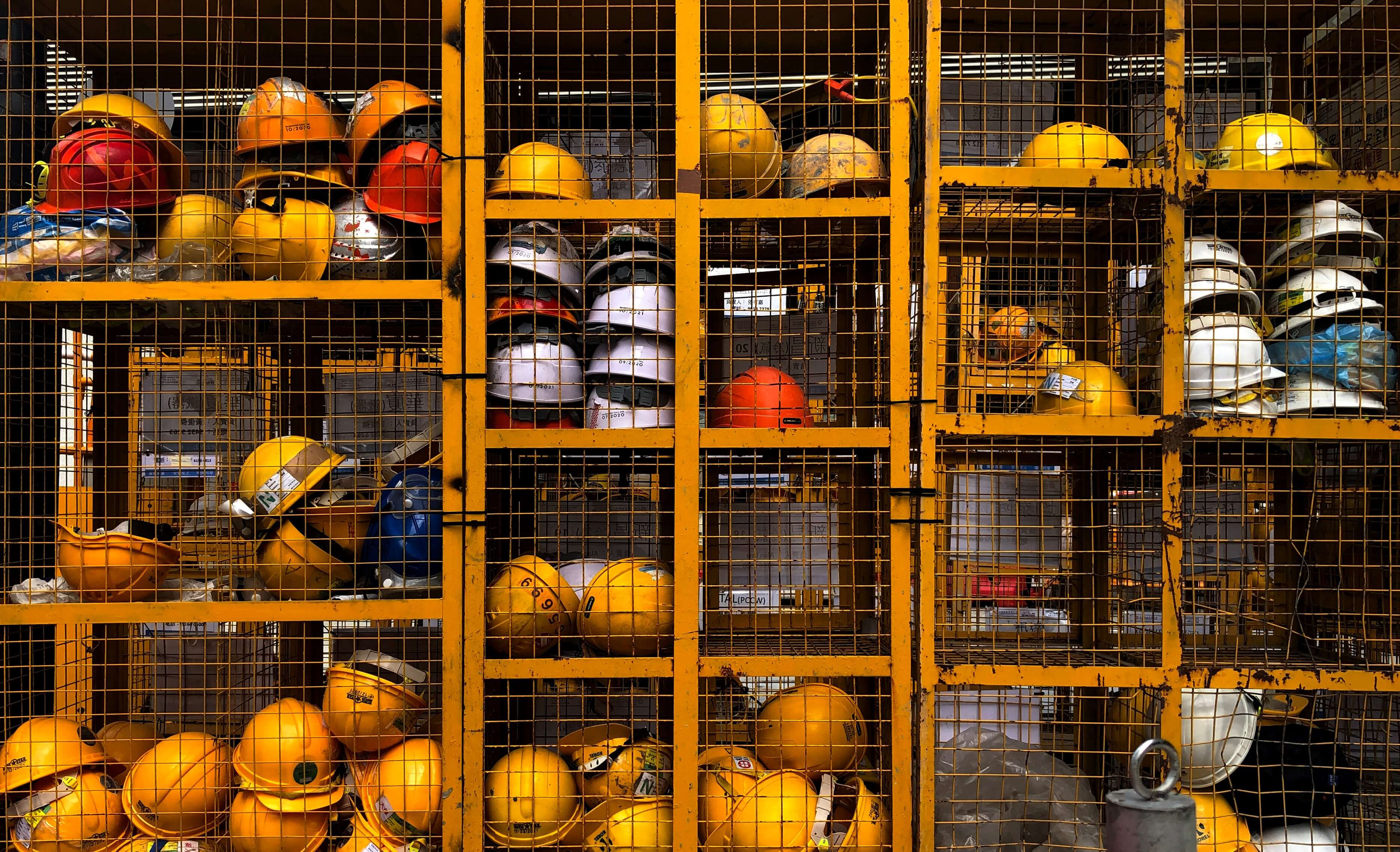Workplace safety, regardless of your specific industry, is a vital responsibility for all good employers. But in certain work environments, like a shipyard or industrial warehouse, having a comprehensive understanding of safety regulations and effective training regimens for employees is especially important.
And it’s more than just to check off OSHA standard requirements.
Ensuring the maximum possible standards for employees is crucial from a productivity and an ethical standpoint, yes, but being found in violation of certain standards can get you stuck with a hefty fine as well. Today, fines can range from $13,260 for a “Serious” violation to $132,598 for a “Willful” or “Repeat” violation—and these citations often include multiple items, compounding these fines.
Thankfully, employers possess considerable agency in limiting the amount of workplace safety hazards their employees face.
OSHA recently released a list of the Top 10 violations from 2019. We’ll provide a recap of those violations and tips (directly from the source) on how to reduce them, so you can maximize your safety standards and minimize injuries and fines:
1.) Fall Protection – General Requirements (6,010 violations)
Year after year, falls are typically the most common cause of serious work-related injuries and deaths. Specifically, OSHA requires fall protection to be provided at elevations equal to or higher than 4 ft. in general industry workplaces, 5 ft. in shipyards, 6 ft. in the construction industry, and 8 ft. in longshoring operations.
Prevention Tips (from OSHA):
- Guard every floor hole with a railing and toe-board or a floor hole cover
- Provide a guard rail and toe-board around every elevated open sided platform, floor, or runway
- If there’s a possibility a worker can fall into or onto dangerous machines or equipment (regardless of height), employers must provide guardrails and toe-boards to prevent workers from falling
- Use of safety harnesses and line, safety nets, stair railings, and handrails where applicable
2.) Hazard Communication (3,671 violations)
The Hazard Communication Standard exists to educate and train workers engaged in handling hazardous materials at work. OSHA requires chemical manufacturers and importers to evaluate the hazards of the chemicals they produce or import, and prepare labels and safety data sheets to convey the hazard information to their downstream customers. Common violations include not having a written plan, inadequate employee training, or improper labels on chemical containers.
Prevention Tips:
- Identify responsible staff to develop effective training programs and action plan
- Revisit your program to stay abreast of changes to chemicals in use in your workplace
- Ensure chemical data sheets are highly visible and available to employees, and that they know exactly where they are
3.) Scaffolding (2,813 violations)
Typical violations of OSHA Scaffolding Requirements are failure to provide adequate protection to employees on scaffolds, providing improper access to scaffolds, failure to have proper guardrail systems, or having incorrect decking on scaffolds.
Prevention Tips:
- Ensure fall protection on scaffolding over 10 ft. high
- Ensure that supported scaffolds have firm foundations, mudsills, and base plates
- Make sure you have guardrails on all open ends and sides of platforms
- Ensure regular inspection by a competent person
4.) Control of Hazardous Energy (Lockout/Tagout, 2,606 violations)
These standards exist to protect workers from harmful electrical, mechanical, hydraulic, pneumatic, chemical, or thermal energy sources during the servicing and maintenance of machines and equipment. Common violations include accidental energization, lack of a written program, inadequate energy control procedures, and insufficient employee training.
Prevention Tips:
- Ensure your lockout/tagout practices align with OSHA’s outlines for specific action and procedures for addressing and controlling hazardous energy during servicing and maintenance of machines and equipment (found here)
- Train workers to ensure they know, understand, and are able to follow the correct hazardous energy control procedures
- Develop a comprehensive and understandable written lockout/tagout program that includes procedures to protect employees from hazardous energy
5.) Respiratory Protection (2,450 violations)
Consistently a high-ranking OSHA violation, respiratory protection standards are also one of the easiest for employers to manage and comply with. Common violations include improper medical evaluation, lack of a written respiratory protection program, failure to conduct annual respiratory fit testing, and inadequate respiratory hazards in the workplace evaluations.
Prevention Tips:
- Ensure all respirators are always inspected before use
- Ensure the medical qualification of employees assigned to wear respirators
- Require workers to complete training in proper use and maintenance
- Make sure respirators are certified for correct contaminants that are present in work area
6.) Ladders (2,345 violations)
Similar to respiratory violations, ladder violations are also common but also extremely avoidable. Common violations include using ladders on uneven surfaces, standing on the topmost step (which is not a step), using a ladder for an improper task, and not adhering to specific weight restrictions.
Prevention Tips:
- Never assume every employee knows how to use a ladder
- Ensure employees are properly trained on ladder usage
- Make sure employees are aware of weight restrictions for specific ladders
7.) Powered Industrial Trucks (2,093 violations)
Partially due to how widely used forklifts or lift trucks are, violations related to the use of powered industrial trucks are fairly frequent and can contribute to the nearly 20,000 forklift-related injuries each year. Common violations include operation by unauthorized personnel, failure to display rated vehicle capacities visible to the operator, and operation by an individual under 18 years of age.
Prevention Tips:
- Ensure proper training and certification for powered industrial trucks
- Ensure regular inspection and maintenance
- Determine forklifts with proper safeguards for a specific work environment
- Prohibit attachments or modifications that are not approved by the manufacturer
8.) Fall Protection — Training Requirements (1,773 violations)
Fall violations are so common every year that they make OSHA’s list twice. This item is similar to the number one violation (fall protection, general requirements) that we covered earlier, but is more specific to the training around fall protection.
Prevention Tips:
- Ensure proper training for any employee who might be exposed to fall hazards
- Ensure proper procedures for erecting, maintaining, disassembling, and inspecting the fall protection systems you use
- Retrain employees who do not seem to have the understanding and skill intended by initial training
9.) Machine Guarding (1,743 violations)
These standards exist to protect workers from injuries caused by moving machine parts. OSHA requires all machine parts, functions, or processes that could cause injury to be properly safeguarded. The most common violations involve not properly providing these safeguards or failing to install them correctly.
Prevention Tips:
- Perform regular checks to identify machines with missing guards or improperly installed guards
- Ensure new machinery meets machine guarding safety standards
- Provide thorough training on proper safeguard installation, removal, and maintenance
10.) Personal Protective and Lifesaving Equipment — Eye and Face Protection (1,411 violations)
Rounding out our recap of most common citations is violations due to improper eye and face protection. New to OSHA’s list as of 2018, there has been an increasing emphasis on ensuring proper safety equipment for the eyes and face.
Prevention Tips:
- Remember that proper eye and face protection includes side protection (e.g. clip-on or slide-on side shields) when flying hazards are present
- If an employee wears prescription lenses, ensure that their eye protection incorporates that prescription into its design
Tidewater Staffing
Short on staff? Whether you need ship repair, warehousing, light industrial, or manufacturing personnel, Tidewater Staffing is the partner for you. Recently awarded the Safety Standard of Excellence by the National Safety Council, we place tremendous value on workplace safety and ensure that our personnel is well-trained in the latest safety best practices. Get in touch with us today to learn how we can provide safe, educated, and experienced personnel to help you overcome any hiring challenges you’re facing.



